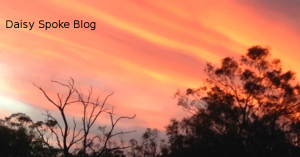
In this article I’ll be sharing 20 ways to keep exercising during the coronavirus pandemic. Whether you are able (and allowed) to get outdoors or whether you have to stay indoors while you’re isolating, there are plenty of ideas here to keep your body moving and your mind feeling at ease.
Isolation around the world during the coronavirus pandemic
No matter where you live in the world as I write this blog post, you will be impacted by the COVID-19 pandemic as well as the health and government directives to manage its spread. Many people are isolating themselves at home or in hotels, and options to spend time outdoors and to exercise and socialise have been restricted.
But, you need to continue to nurture your health including your mental health. You may need to be creative in how you get your regular exercise fix, your outdoors time, and how you socialise.
Mental health risks during isolation
For myself, one of the biggest fears I had about isolation practices was concerning my mental health and the mental health of other people. Vigorous exercise, time in nature, and deep connections with others form the foundation of my ability to function. Without them, I’ve really struggled in the past. And I know I’m not alone. Exercise and movement also boosts your immune system which is incredibly important now too, and it provides protection against future disease.
Stay active and stay connected when you can’t get about freely
I’ve collected together some ideas to help you stay active, stay connected with the outdoors, and stay connected with others during periods of isolation. These ideas are just as useful for other times in your life when you can’t go out as freely as you’d like to such as:
- when you have to stay home to care for young children or someone who is not well
- during times of injury, sickness or limited mobility
- when your non-working hours are after dark
- when you’re travelling
Caution: check your local regulations about isolating during the coronavirus pandemic
Of course, you need to pick and choose, or innovate your own ideas based on your own circumstances, what your local regulations require and what resources you have access to. Not all these ideas will suit everybody or every situation. Naturally keep your physical distance from others during the pandemic, and don’t take any unnecessary risks that might result in injury and the need for medical assistance. Another thing – be mindful of the level of noise and disturbance you might make if you share a house with others, live in an apartment building, or if you live on a small block.
We’re all in this together!
Let me know if you have other ideas to add to mine and we’ll include them in a follow post! Remember, we’re all in this together and supporting each other is the best way to overcome challenges like this.

20 ways to keep exercising during the coronavirus pandemic
- YouTube videos provide a wide selection of workouts for you to do in your own time at home. Look for ones that have been created by accredited instructors or recommended by exercise physiologists or physiotherapists.
- Virtual gym classes enable you to participate in a class in real time. Generally virtual classes are streamed live and everyone participates at the same time from their own location. Check if your local gym is offering these (most gyms have closed their face to face services at the time of writing), or search for online businesses and exercise apps which offer this.
- Home equipment – Make use of what you have at home such as weights, skipping rope, Swiss ball, steps, and old exercise DVDs . You can adapt everyday household items too such as water bottles or cans of food for weights, and don’t forget the stairs in your house can add value to your workout too.
- Virtual accountability buddies can check in with each, hold each other accountable to daily activities, and support each other to problem-solve issues as they come up. You can probably find an accountability buddy amongst your contacts, friends or work colleagues.
- Get out where and when you can. Look for opportunities and make the most of them while you can. If your local park is open and it seems quiet around dinner time, that might be a good time to get out there because you never know when places like that will close, or when your household will be quarantined.
- Plan and track your exercise in a journal to keep yourself committed and valuing your daily exercise on an ongoing basis. Take it another step forward by tracking how you felt before and after your workouts as well as your recovery experiences.
- Callisthenics, stretches, and body weight exercises were probably part of your school Physical Education classes. Do you remember star jumps, lunges, squats, jogging on the spot, push ups, and planks? If in doubt about injuries or medical conditions seek advice from an exercise physiologist or doctor first.
- Put on some music and dance and move to the rhythm! This isn’t about your style or skill – it’s about moving and having fun! Invite your household to join in.
- Chair yoga is great if you are not feeling well, have balance problems or limited mobility. Look on the Internet for workouts by yoga instructors who have adapted traditional yoga for use in seated positions.
- Street dances / classes are happening around the world in some suburban areas. Check if this is allowable in your area, and if so, organise a designated time for you and your neighbours to come out into your front gardens or patios for a dance-off or workout. Remember to maintain your physical distance!
- Backyard workouts are as varied as your imagination. Is there a job in the yard you’ve been meaning to do ‘one day’? You’ll get a great workout lifting logs, moving rocks, pruning trees and digging in the garden. You can also create an outdoor workout space in which you can jump obstacles, climb a pole, move through an obstacle or slalom course, practice bike handling or skate boarding skills, run around with the kids, or play games with your pet dog.
- Birdwatching from home is an activity that can have you moving gently and quietly around your garden, or if you are not able to go outside, watching from your balcony or window. Grab a bird identification book from your shelves or research your finds on the Internet or using an app such as eBird. There are also plenty of online forum and social media groups sharing birdwatching experiences.
- Mindful walks are another gentle activity that can be done in your own yard, footpath, or even indoors. Bring your attention to the sensations of placing your foot down and slowly moving your weight, lifting your foot and placing it forward. You can also bring your attention to the sensations in your legs and the rest of your body as you walk.
- Be a kid again! What did you do when you were a kid? Active kids don’t need dedicated exercise or outdoors time because their activity tends to be spontaneous and spread throughout the day. What did you do when you were a kid? I played elastics, tiggy / chasey, Red Rover, trampoline, balance games such as balancing on a log, backyard cricket and soccer, and hitting a ball against a wall. Don’t leave it only to the kids – these activities are perfect for any age!
- If you have children living in your household, get down on the floor and play! Games like wrestling (gentle of course!), kneeling chasey and indoor hockey can give everyone a great workout.
- If your National Parks, regional parks and State Forests are open and are not busy with other people exercising, go for a walk or a bike ride being careful not to stretch yourself past your comfort zone by taking any unnecessary risks or going off track.
- Make your own workout space at home by creating a dedicated exercise space (if you have the room) in a spare room, a section of the living room, the garage or the verandah. If you don’t have enough space for this, you can get yourself organised by creating a dedicated storage area for the equipment you use in your workouts.
- Use an App to track your activity levels, and if you’re into it, you can share your stats with your friends.
- Create circuits or stations with a variety of exercises, moving from one station to the next every minute (or longer or shorter if you prefer). Keep moving around the circuit to complete your workout.
- Use active indoor games like indoor hockey, quoits, and freeze as an alternative to your usual workout whilst having fun with your family or housemates.
Now it’s your turn – what will YOU do?
Now it’s your turn to put these ideas into practice so that you look after your health, including your mental health in spite of the limitations you have during a period of isolation. Which of these ideas would you like to try? Have you got some other ideas to share with our readers? I’d love to hear from you and include your ideas in a future post. How will YOU keep exercising during the coronavirus pandemic?
You can listen to this article on the Outdoors is my Therapy podcast!
Discovering mountain biking as life’s ultimate parallel universe in her middle age, Kathryn Walton shares information and reflections in ‘Daisy Spoke’ that inform, inspire and empower women to a healthy and active lifestyle.



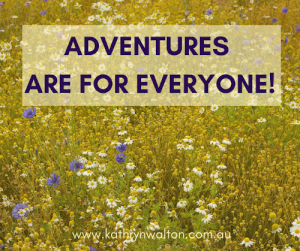
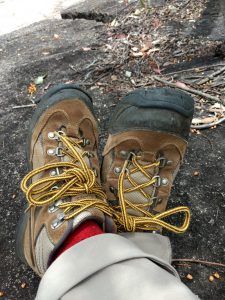
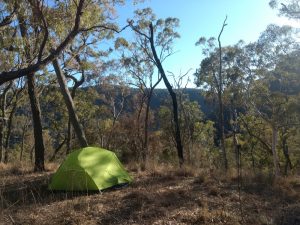
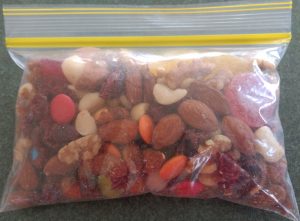
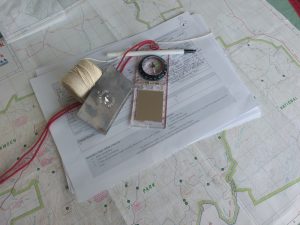
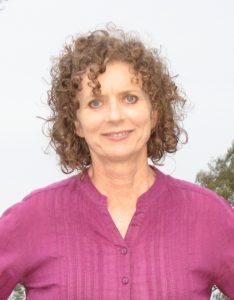
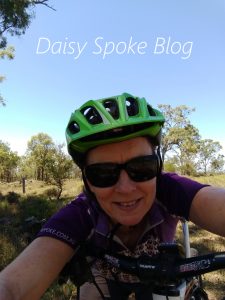
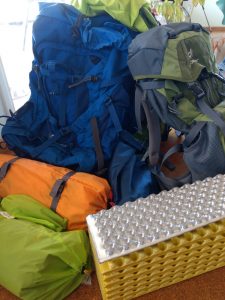


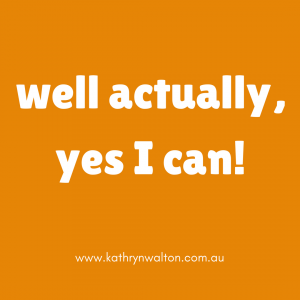
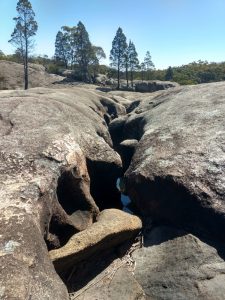
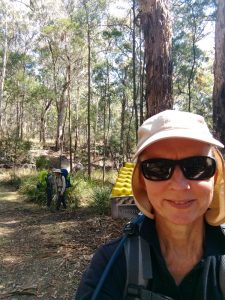
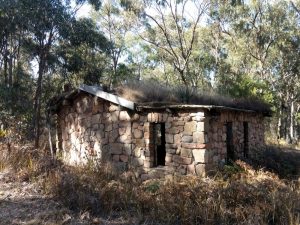
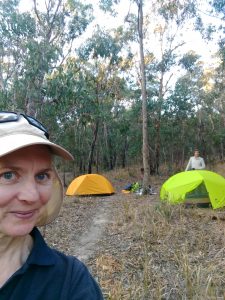
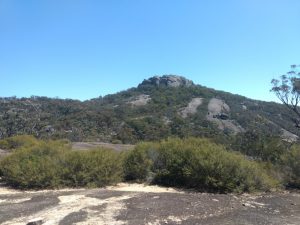
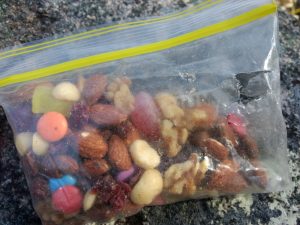
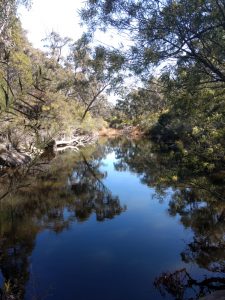
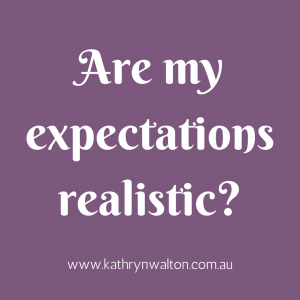
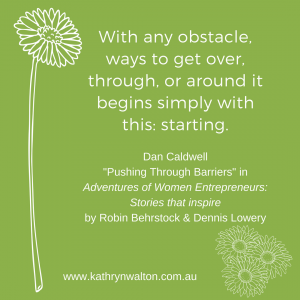


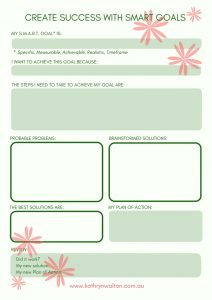
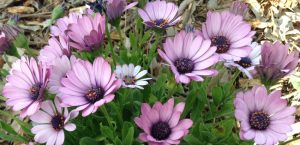
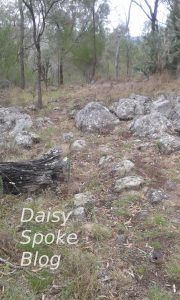 3. Pace out that tricky section of MTB trail that gets you stuck. As you become more familiar with the tricky technical bits, you’ll be able to find a line and visualise yourself riding it. A great set-up for the next time you ride.
3. Pace out that tricky section of MTB trail that gets you stuck. As you become more familiar with the tricky technical bits, you’ll be able to find a line and visualise yourself riding it. A great set-up for the next time you ride.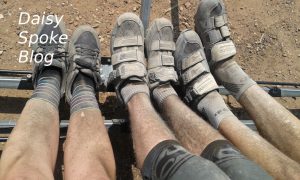 a route on a map, create a budget, make some bookings. You know you want to!
a route on a map, create a budget, make some bookings. You know you want to!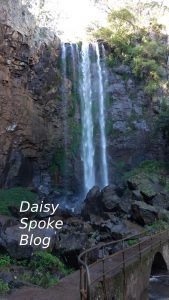 live with? Show them a bit of love and maybe at the same time you could check out that new trail in preparation for the next time you go riding!
live with? Show them a bit of love and maybe at the same time you could check out that new trail in preparation for the next time you go riding!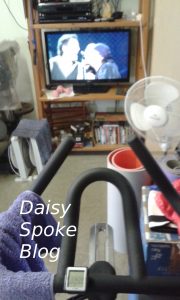 13. Indoor training. Interval training on the stationary bike to your favourite rock music that gets your legs spinning, your heart pumping, and the time flying by. Bruce Springsteen’s my all time favourite. Nothing beats a good workout to the tunes of “Come on up for the Rising”, “Waiting on a Sunny Day”, “Rosalita”, and “Born to Run”. You’ll feel the difference in your fitness next time you have a real dinky-di outdoors-y MTB ride!
13. Indoor training. Interval training on the stationary bike to your favourite rock music that gets your legs spinning, your heart pumping, and the time flying by. Bruce Springsteen’s my all time favourite. Nothing beats a good workout to the tunes of “Come on up for the Rising”, “Waiting on a Sunny Day”, “Rosalita”, and “Born to Run”. You’ll feel the difference in your fitness next time you have a real dinky-di outdoors-y MTB ride! Kathryn Walton shares information and reflections in Daisy Spoke that connect, inspire and self-empower women to make healthy choices for themselves.
Kathryn Walton shares information and reflections in Daisy Spoke that connect, inspire and self-empower women to make healthy choices for themselves.
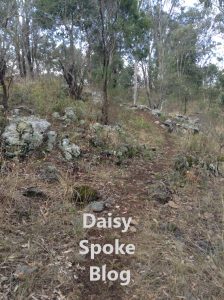 There’s a recognised association between wellness and outdoor activity. Simply being surrounded by nature is a step towards feeling more relaxed. With the sunshine stimulating our brains and enhancing our mood, there’s no better all-natural way to manage stress. Even just a few minutes outdoors is beneficial, so if you don’t have enough time for a long ride ….. have a short ride! With a bit of fresh air and sunshine, you’ll blow away the cobwebs in your mind and reconnect with those things that bring you joy.
There’s a recognised association between wellness and outdoor activity. Simply being surrounded by nature is a step towards feeling more relaxed. With the sunshine stimulating our brains and enhancing our mood, there’s no better all-natural way to manage stress. Even just a few minutes outdoors is beneficial, so if you don’t have enough time for a long ride ….. have a short ride! With a bit of fresh air and sunshine, you’ll blow away the cobwebs in your mind and reconnect with those things that bring you joy.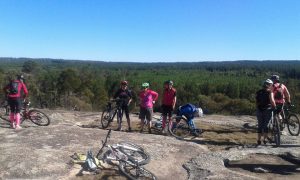 Sedentary behaviour is considered a modern danger to our health with risks so serious that the problem has been compared to that of smoking. Physical activity refers to general movement throughout the day, so it has a broader meaning than ‘exercise’. Bike riding is a low impact activity and therefore a great choice for people of all ages and abilities. MTB in particular gets your whole body moving as you navigate rougher terrain. You can jump on your mountain bike to commute to and from work on paved surfaces, or hit the trails that are purpose built for recreational use. Cross country, downhill, enduro, freestyle, trials, or whatever is your preference ….. the main idea is to get your body moving.
Sedentary behaviour is considered a modern danger to our health with risks so serious that the problem has been compared to that of smoking. Physical activity refers to general movement throughout the day, so it has a broader meaning than ‘exercise’. Bike riding is a low impact activity and therefore a great choice for people of all ages and abilities. MTB in particular gets your whole body moving as you navigate rougher terrain. You can jump on your mountain bike to commute to and from work on paved surfaces, or hit the trails that are purpose built for recreational use. Cross country, downhill, enduro, freestyle, trials, or whatever is your preference ….. the main idea is to get your body moving. Formal or structured meditation practices are very helpful for developing skills of attention, concentration, relaxation and mood management. Some people find it very challenging to stay still enough to engage with this process. Whether you meditate in this way or not, you can still reap the benefits of mindfulness practices by fully bringing your attention and awareness to your bike riding. Visualise your attention as a narrow laser beam and focus on your actions and your surroundings using your senses – in particular notice what you see, hear, smell and feel. Notice the fluid movement of your body in response to the terrain, the smell of the pine trees, the breeze on your face, the physical features of the trail in front of you. When thoughts about work or other issues arise, simply refocus on your ride. Before you know it, you’ll have let go of some of those things you’ve been worrying about and given your brain a well-earned rest.
Formal or structured meditation practices are very helpful for developing skills of attention, concentration, relaxation and mood management. Some people find it very challenging to stay still enough to engage with this process. Whether you meditate in this way or not, you can still reap the benefits of mindfulness practices by fully bringing your attention and awareness to your bike riding. Visualise your attention as a narrow laser beam and focus on your actions and your surroundings using your senses – in particular notice what you see, hear, smell and feel. Notice the fluid movement of your body in response to the terrain, the smell of the pine trees, the breeze on your face, the physical features of the trail in front of you. When thoughts about work or other issues arise, simply refocus on your ride. Before you know it, you’ll have let go of some of those things you’ve been worrying about and given your brain a well-earned rest.
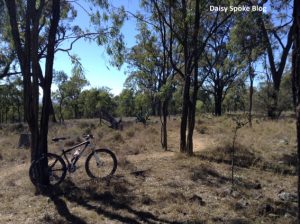 Fatigued from the heat of the day and the associated sleep disturbance through the night, I struggle to enjoy my mountain bike riding as usual. There’s a narrow time frame to get outside in order to avoid the oppressive heat. Yet even then it seems too hot, there are too many flies and mozzies, I still get heat rash all over (just like a baby, yes, including ….. well ….. including everywhere!) and there is the ever-present foreboding possibility of [GASP] snakes. Not just any snakes though. The snakes round this part of the world (Australia) are the deadliest on the planet, and in my little corner of the globe (Darling Downs, Queensland) they are more likely to be deadly than not!
Fatigued from the heat of the day and the associated sleep disturbance through the night, I struggle to enjoy my mountain bike riding as usual. There’s a narrow time frame to get outside in order to avoid the oppressive heat. Yet even then it seems too hot, there are too many flies and mozzies, I still get heat rash all over (just like a baby, yes, including ….. well ….. including everywhere!) and there is the ever-present foreboding possibility of [GASP] snakes. Not just any snakes though. The snakes round this part of the world (Australia) are the deadliest on the planet, and in my little corner of the globe (Darling Downs, Queensland) they are more likely to be deadly than not! Sitting down at home after a particularly hot day (it’s still over 30deg C at 7:30pm), I feel the faint breeze starting to work its magic, gently wafting through the windows, sharing its spirit and energy with me, re-energising and refreshing my body, mind and soul.
Sitting down at home after a particularly hot day (it’s still over 30deg C at 7:30pm), I feel the faint breeze starting to work its magic, gently wafting through the windows, sharing its spirit and energy with me, re-energising and refreshing my body, mind and soul. 